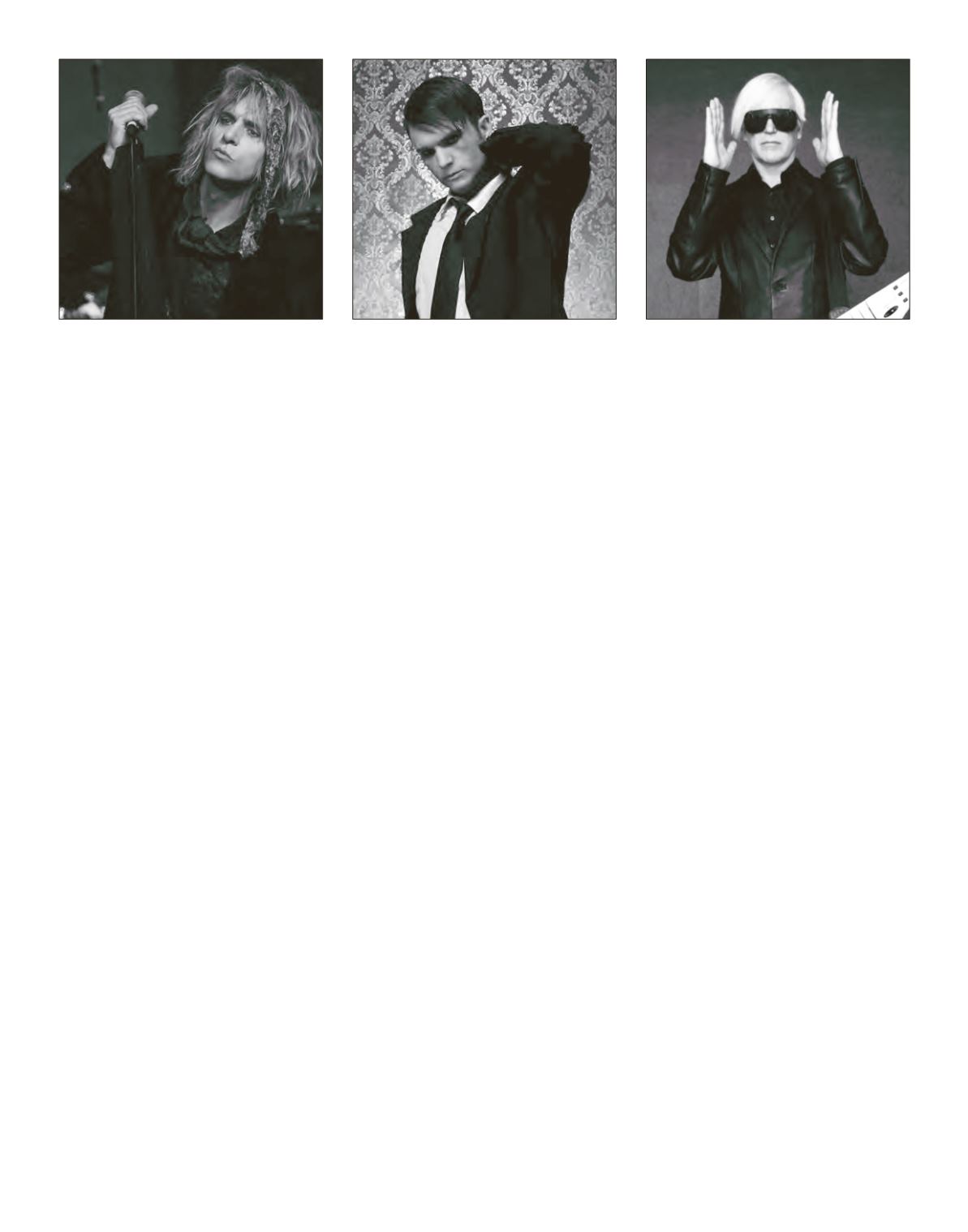

GENE LOVES JEZEBEL
In the early 1980s, twins Michael and Jay Aston
formed Gene Loves Jezebel and debuted at Cov-
ent Garden’s Rock Garden with the demo sin-
gle “Shaving My Neck.” They were picked up by
Situation Two Records, a subsidiary of Beggar’s
Banquet, and released another single, “Scream-
ing for Emmalene” before beginning work on its
first full album,
Promise
. After the disc made a
big splash on the UK’s indie chart, Gene Loves
Jezebel did a recording session with influential
BBC radio DJ John Peel and toured with fellow
Welsh artist John Cale. The sophomore album
Immigrant
was released in 1985, and the group
embarked on its first tour of the US later that
year. Joining the roster of Beggar’s Banquet
proper in 1986, the band saw greater success
with
Discover
and the singles “Desire,” “Sweetest
Thing,” and “Heartache,” especially on college
radio. Having turned its attention toward dance
music, Gene Loves Jezebel scored its biggest hit
with 1988’s
The House of Dolls
. “The Motion of
Love” captured the UK audience, while “Suspi-
cion” appealed to listeners in the US. After Mi-
chael Aston departed the group for solo projects,
Gene Loves Jezebel continued to win over its US
audience with
Kiss of Life
and
Heavenly Bodies
,
respectively featuring the rock hits “Jealous” and
“Josephina.” Michael reunited with the group for
VII
(1999), and then the brothers began leading
parallel versions of the band: Michael in the US
and Jay in the UK. Michael is the mastermind of
Love Lies Bleeding
(1999),
Giving Up the Ghost
(2001),
Exploding Girls
(2003), and
Dead Sexy
(2009), and Jay led
Accept No Substitutes
(2002),
The Thornfield Sessions
(2003),
The Anthology,
Vols. 1–2
(2006), and
Dance Underwater
(2017).
CHRISTOPHER ANTON
Christopher Anton is best known as the former
vocalist of the synth-pop band Information So-
ciety and the synth-rock band Psudocipher. He
joined two of Information Society’s founders,
Paul Robb and James Cassidy, in reconven-
ing the group in early 2006, co-writing several
tracks with Robb over the next year. The results
were the EP
Oscillator
and the LP
Synthesizer
,
marking the first new music from Information
Society in 10 years. Both collections nodded to-
ward the band’s electro-dance origins (“What’s
on Your Mind (Pure Energy)” and “Think”)
with the new tracks “Burning Bridges,” “Back
in the Day,” and “Baby Just Wants.” Anton also
performed as frontman for the band on tour
between 2006 and 2008, including shows in
Oregon, California, New York, New Jersey, and
Brazil. In late 2007, Anton recorded and re-
leased the international dance track “I’m Lost
in You,” which was written and produced by
electroclash pioneer Isaac Junkie. More recent-
ly, he gained popularity as a solo artist with his
dance single “Fade to Grey” and his solo album
Destination: X
.
TRANS-X
Trans-X rose to fame in 1985 with the re-re-
lease of its 1981 song “Living on Video.” The
new version became a massive hit worldwide,
making number 61 on the
Billboard
Hot 100,
and has been covered by many artists since.
Trans-X made another remix of it in 2003, and
then French DJ Pakito made it a hit again in
2006 with his remix. The track has also been
remixed by U 96, Nathalie DeBorah, DJ Picco-
lo, Dr. Lektroluv, Trance XS, Cardenia, Cosmo
& Tom, La Bouche, Culture Beat, DJ Interface,
Ratty, Lazard, Gary D, Masterboy, Pin-Occhio,
2 Brothers on the 4th Floor (as “Living in Cy-
berspace”), and Potatoheadz. It has also been
covered as “Vivre Sur Video” by Vive la Fête and
as “Dance Epidemic” by Electric Six. Still one
of the most-requested songs in the club scene,
“Living on Video” also entered pop culture in
a 2009 Diet Pepsi commercial in which a man
wishes he could have sleepovers again.
JULY 23 – JULY 29, 2018 | RAVINIA MAGAZINE
135









